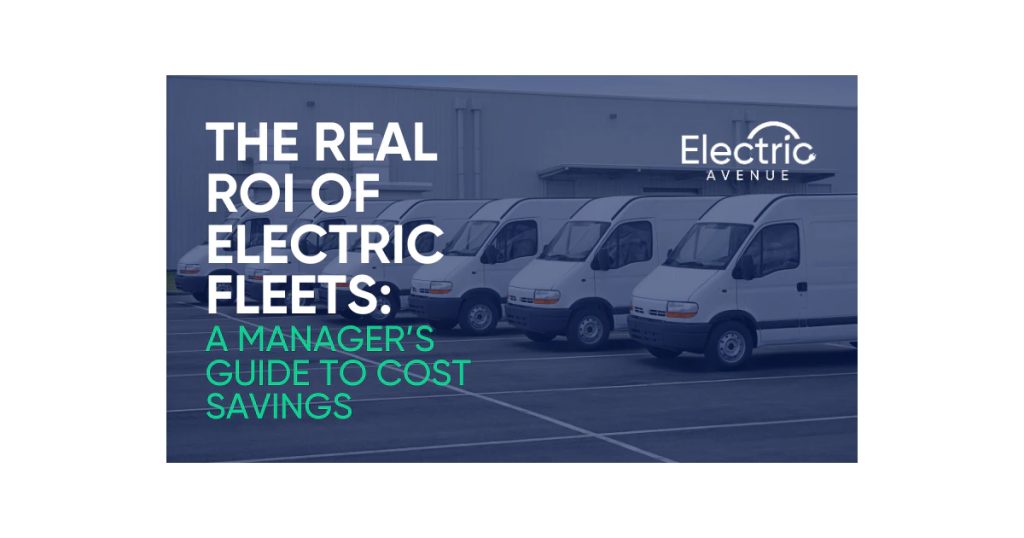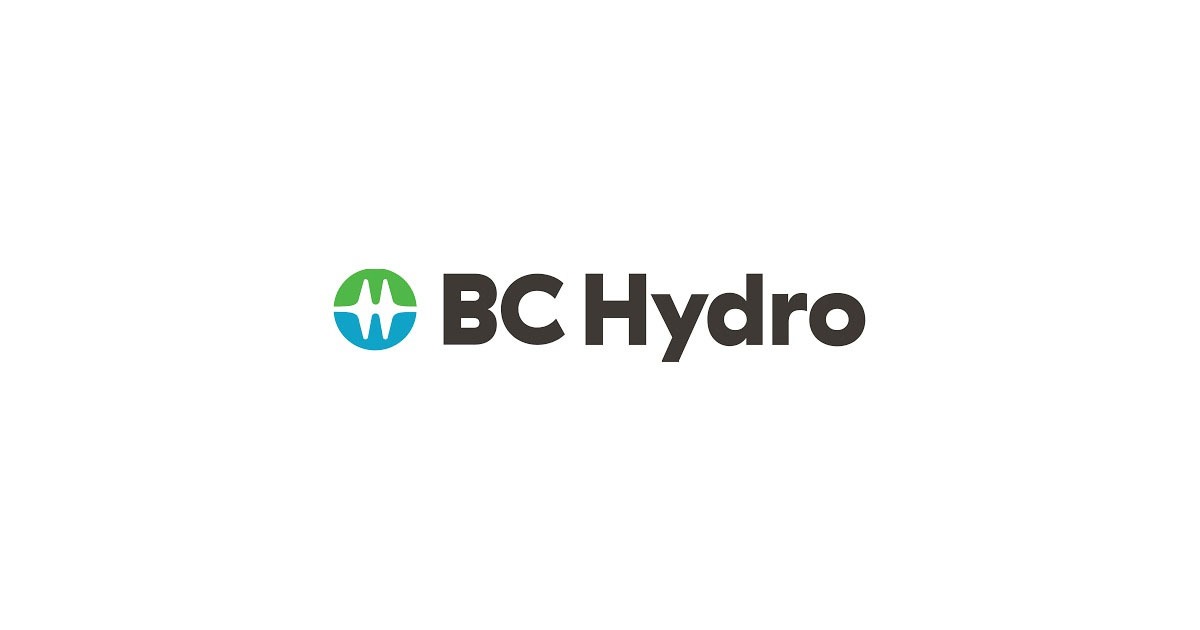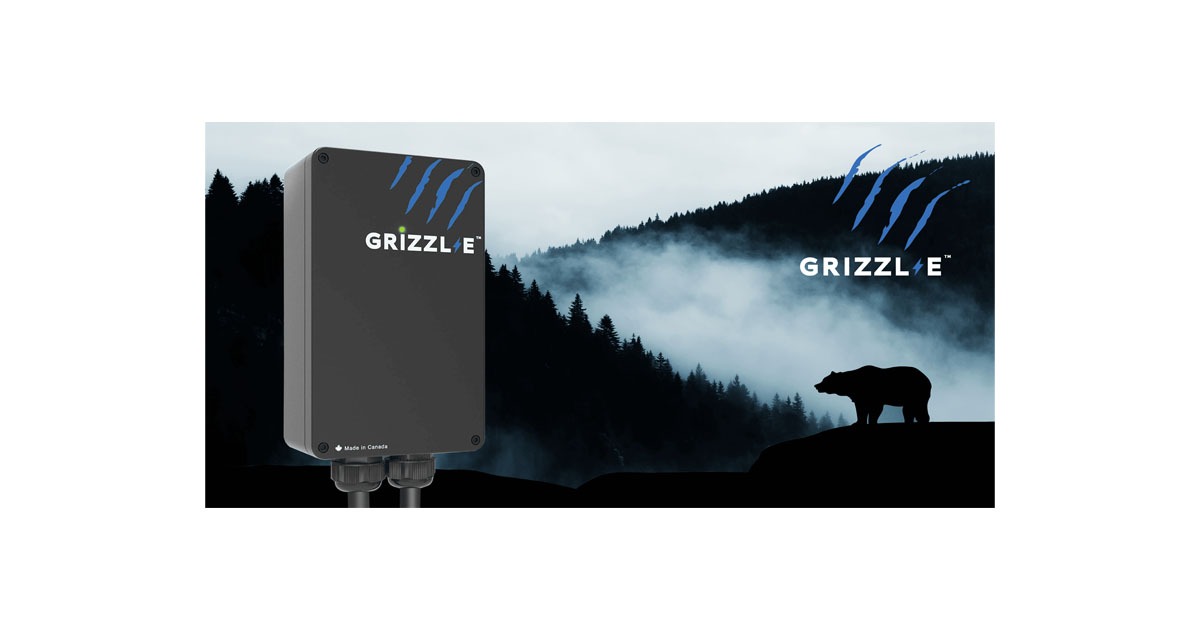The Real ROI of Electric Fleets: A Manager’s Guide to Cost Savings

May 20, 2025
Fleet electrification isn’t just a trend—it’s becoming a competitive advantage. But if you’re a fleet manager, there’s one question that trumps all others:
“Will going electric actually save us money?”
This guide cuts through the hype to look at the real return on investment (ROI) of electric fleet vehicles in 2025—from upfront costs to long-term operational savings. You’ll also find links to Electric Avenue’s ROI Calculator and its recent Fleet Electrification Webinar, so you can run the numbers yourself and hear from industry members who’ve already made the switch.
What Goes Into the ROI Equation for Fleet EVs?
Fleet managers are used to thinking in terms of total cost of ownership (TCO), and EVs shine in that model—especially when you factor in:
Acquisition Costs
While EV sticker prices can be higher, federal and regional incentives can bring costs down significantly. And with battery prices falling, EVs are often price-competitive within 1–2 years for many commercial vehicle categories.
Fuel Savings
Electricity is not only cheaper than gasoline or diesel—it’s more stable in price. Plus, fleets using depot charging avoid the higher costs of public networks.
Example: A fleet vehicle driving 30,000 km/year might spend $4,800/year on fuel, while the equivalent EV spends under $1,200/year on electricity.
Maintenance Savings
With fewer moving parts, no oil changes, and less brake wear, EVs drastically reduce maintenance costs—often by 30–50% over five years.
Incentives & Grants
Rebates from federal, provincial, and utility programs can help cover both vehicle and charger costs. Many of these are time-limited or tiered, meaning early movers benefit most.
Try It Yourself: ROI Calculator
Want to see what this looks like for your fleet? Use the interactive ROI Calculator to input your vehicle type, mileage, and fuel costs. Get a customized ten-year TCO analysis instantly.
Webinar on Demand: The Electric Fleet Advantage – Timing Your Shift for Maximum ROI
Looking for expert insight into when and how to go electric? Electric Avenue’s 40-minute on-demand webinar is free to watch and packed with strategic takeaways.
Presented by Mark MacDonald, president of Electric Avenue, this session covers:
- Identifying the optimal timing for fleet electrification
- Key infrastructure and charging decisions
- Lessons from a successful real-world fleet deployment
The live webinar was held on January 15, 2025 and is 40 minutes in length, including Q&A.
Watch free: The Electric Fleet Advantage – Timing Your Shift for Maximum ROI
Real-World Deployment: SaskPower’s Scalable Fleet Charging Network
Real-world fleet success isn’t just about the numbers—it’s about proving EV charging can be scalable, reliable, and resilient in diverse operating environments.
A great example comes from SaskPower, one of Canada’s largest utilities. To support its growing electric fleet and explore future public charging opportunities, SaskPower deployed a Watti Direct 120kW DC Fast Charger and four Watti Pro 48A Level 2 chargers across five key locations in Saskatchewan.
The Challenge: The company needed a charging strategy that could operate in harsh -30°C winters, support both fast-turnaround and long-duration charging, and adapt to a range of site conditions—from urban fleet hubs to lightly staffed rural locations.
The Solution: Working with Electric Avenue and sales partner The Titan Group, SaskPower implemented a hybrid deployment that delivered high-speed charging at their central maintenance hub, and dependable Level 2 charging at satellite sites. All chargers were integrated with Electric Avenue’s Enterprise Software, enabling:
- Remote monitoring and fault diagnostics
- Energy usage analytics
- RFID-based access control and real-time alerts
The Outcome:
- No costly electrical upgrades required
- Reliable cold-weather performance across all sites
- A scalable, future-ready foundation for growing their EV fleet
SaskPower’s deployment proves that with the right planning and technology, fleets can electrify confidently—even in the toughest environments.
Hidden ROI Boosters You Shouldn’t Miss
Beyond the obvious cost savings on fuel and maintenance, fleet electrification unlocks a range of indirect financial and strategic benefits that are often overlooked—but just as impactful.
1. Exemption from Carbon Pricing
In most provinces and states, electricity is not subject to carbon taxes or fuel surcharges, unlike diesel and gasoline. As carbon pricing increases in the coming years, this creates a growing cost advantage for electric fleets—especially for high-mileage operations.
Over time, this reduces exposure to regulatory risk and shields your fleet from fuel cost volatility.
2. Smoother Ride, Lower Downtime Risk
EVs offer a quieter, lower-vibration driving experience, especially in stop-and-go city traffic. With fewer moving parts and simpler drivetrains, there’s less wear-and-tear and a reduced likelihood of breakdowns.
That means more time on the road and less time in the shop—contributing to productivity and operational reliability.
3. ESG Performance & Corporate Reputation
Electrifying your fleet supports Environmental, Social, and Governance (ESG) goals—critical for companies with sustainability mandates or investor-facing reporting. It also resonates with municipal clients, procurement teams, and communities that prioritize climate-conscious partners.
Fleet electrification can be a public proof point of your company’s environmental leadership.
4. Carbon Credits & CATS Program Revenue (Canada-Specific)
In provinces like British Columbia and Québec, and under the CATS (Canada’s Alternative Compliance Credits) program, fleet operators may be eligible to earn carbon credits or participate in compliance incentive programs by tracking their energy use.
Some utilities and agencies offer credit monetization programs, meaning your fleet could actually generate revenue—or trade compliance credits with other entities.
How to Build a Business Case That Gets Executive Buy-In
When presenting ROI to your leadership team, make sure to:
- Use total cost of ownership, not just upfront cost
- Factor in charging infrastructure and downtime mitigation
- Show how the investment supports compliance, sustainability goals, and brand leadership
Final Thoughts: It’s Not Just Cost-Effective—It’s Competitive
Electrification is rapidly becoming the standard, not the exception. The fleets that act now aren’t just going greener—they’re gaining a strategic edge through cost savings, operational simplicity, and future-proof compliance.




